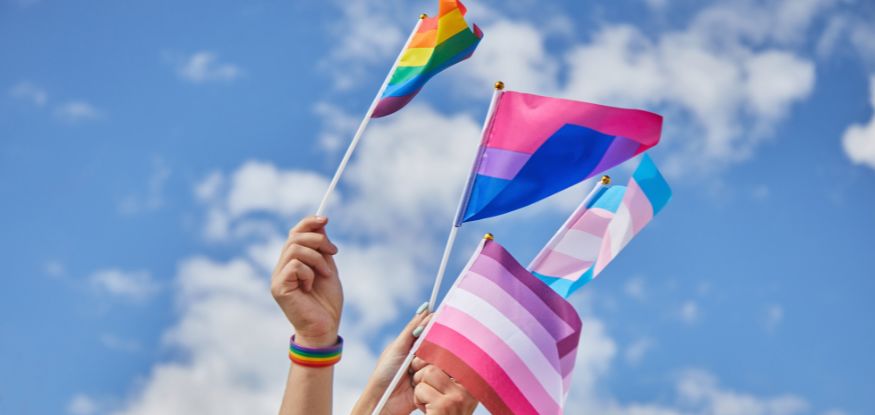With our Pride flags flying high this pride month, it’s important to acknowledge the different types of flags that symbolise the diversity within the LGBTQIA+ community. From the first-ever pride flag introduced in 1978 to the transgender flag flown in 2000 and the gender nonbinary flag created in 2014, just like the community itself, these flags are always evolving. We are here to answer some of your most commonly asked questions about pride flags, like what the colours of the pride flag mean, how many different types of pride flags are there, and how the pride flag has changed over the years.
Created by Gilbert Baker in 1978
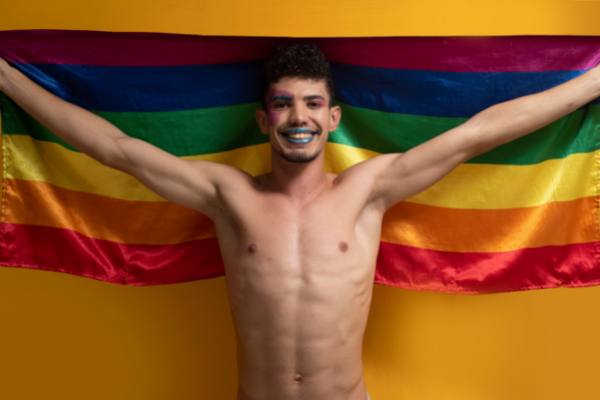
Gilbert Baker, a political activist, designer, and vexillographer (aka flag maker), designed the original 8-colour LGBT rainbow flag that was flown in the 1978 San Francisco Gay Freedom Day Pride Parade. Baker saw flags as one of the greatest and most powerful symbols of pride, and this flag was exactly that for the gay and lesbian community. In an interview, Baker said, “our job as gay people was to come out, to be visible, to live in the truth, as I say, to get out of the lie. A flag really fits that mission, because that’s a way of proclaiming your visibility or saying, ‘This is who I am!’” So, what does each of the eight colors represent in the gay pride flag?
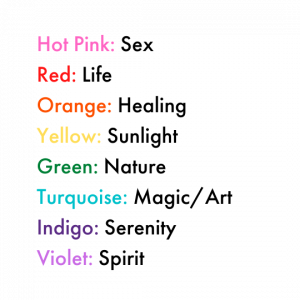
This LBGT flag marked the start of a powerful movement and paved the way for dozens of other pride flags.
So, how has the pride flag evolved over the years? Following the death of San Francisco Board Supervisor and fierce gay rights activist, Harvey Milk, Baker’s original rainbow flag was revised, using only six colours instead of eight. Eliminating the hot pink and turquoise due to fabric difficulties, the six-colour flag is one of the most commonly recognized LGBTQIA+ flags there is, and it is synonymous with liberty, diversity, and acceptance. The evolution of flags does not stop here, though. In the coming decades, many members of the LGBTQIA+ community developed new flags to celebrate different orientations, identities, and sexualities. If you are interested in learning about the types of pride flags, what they symbolise, and what the colors represent, you are in the right place.
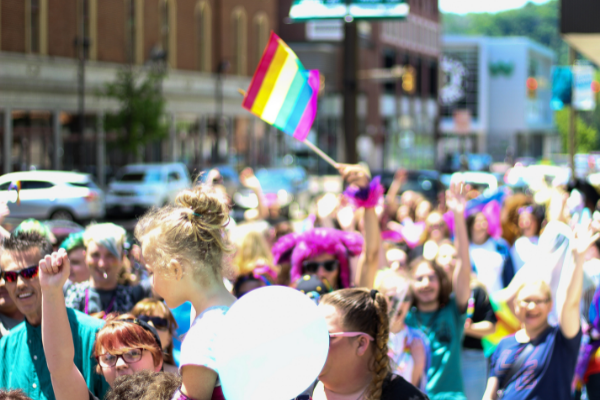
Can you take a guess as to how many LGBTQIA+ flags there are today? If you guessed 50, then you would be right! Before diving into a list of the most recognised pride flags, we want to acknowledge that there are additional flags that may not be included in the list but are equally important to us. For an overview of all 50 LGBTQIA+ flags, head over to Queer In The World to learn about what each colour of the other pride flags means.
So, without further ado, let’s raise our flags – whichever you may choose!
Bisexual Flag
Created by Michael Page in 1998
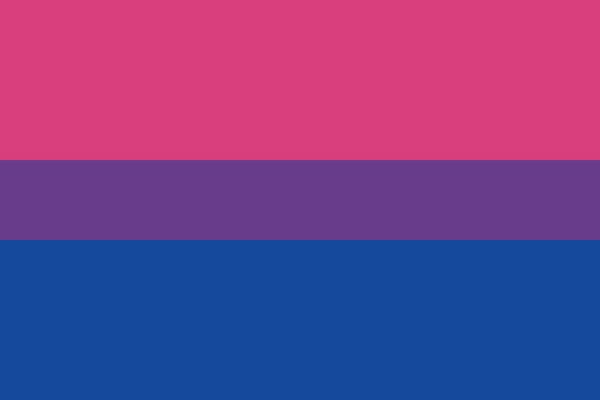
To help create widespread visibility for the bisexual community, Michael Page created the bisexual flag. On biflag.com, Page wrote, “the key to understanding the symbolism in the Bi Pride Flag is to know that the purple pixels of color blend unnoticeably into both the pink and blue, just as in the ‘real world’ where most bi people blend unnoticeably into both the gay/lesbian and straight communities.” For Page, this flag was just part of his work in spreading bisexual visibility to his community and beyond. As for the colours that he chose, you can learn more about them below:

Transgender Flag
Created by Monica Helms in 1999
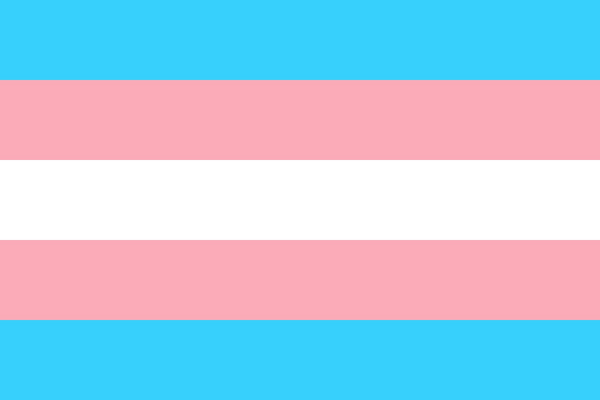
Unveiled at the 2000 Phoenix, Arizona pride parade, Monica Helms, founder of the Transgender American Veterans Association, designed the transgender pride flag after meeting Michael Page, creator of the bisexual pride flag. In the Transgender Tapestry Issue #90 Summer 2000, Flying a Palindrome, Helms describes the reasoning and meaning behind the transgender flag:
“The light blue is the traditional color for baby boys, and the pink is the traditional color for baby girls,” Helms described the three-color five-striped flag. “The white in the middle is neutral, for all those who feel they have a neutral or undefined gender. And no matter which way you fly it, it will always be correct, sort of like a palindrome, a word you can spell from front or back and it comes out the same, like ‘mom’. That is our way of sort of symbolizing our trying to find correctness in our own lives.”
Monica Helms’ dedication to the transgender community has not gone unnoticed.
Lesbian Flag
Originally created by Sean Campbell in 1999; updated by Natalie McCray in 2010; updated by Emily Gwen in 2018
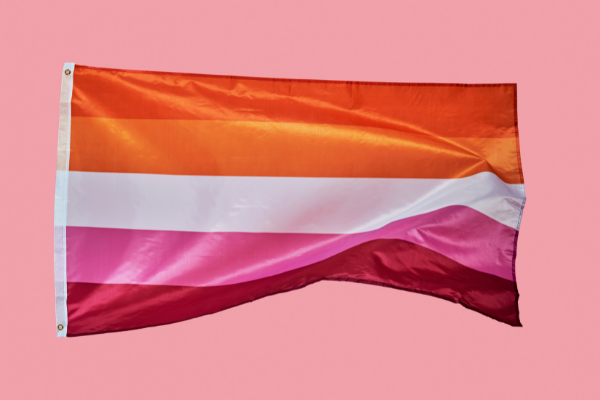
Similar to Baker’s rainbow pride flag, the lesbian flag has undergone changes throughout time. Originally introduced in 1999, Sean Campbell’s lesbian flag featured a violet background and double axe, aka labrys, that “represents the strength and feminism of homosexual women and was adopted into the lesbian community in the 1970s,” according to Horniman Museum & Gardens. It was first introduced to the community in the 2000 edition of the Gay and Lesbian Times’ pride issue.
Feeling like Campbell’s flag did not represent the lesbian community as a whole, Natalie McCray designed the Lipstick Lesbian Flag, which she posted to her blog, This Lesbian Life. The lipstick lesbian flag “contains a red kiss in the left corner, superimposed on seven stripes consisting of six shades of red and pink colors and a white bar in the center.” While taking steps forward to be more inclusive of all types of lesbians, this flag still did not encompass the entire community. Fast forward to 2018 when Emily Gwen created the orange-pink lesbian flag to encompass the community as a whole. So, what does Gwen’s flag represent?
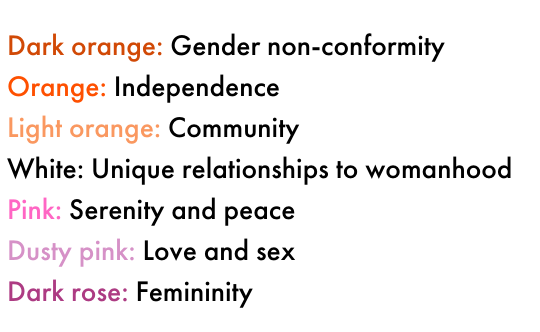
This is not an exhaustive list of lesbian flags, so if you don’t see one there, we didn’t forget about it! In fact, there are 13 different lesbian flags, all being flown with pride.
Progress Pride Flag
Created by Daniel Quasar in 2018
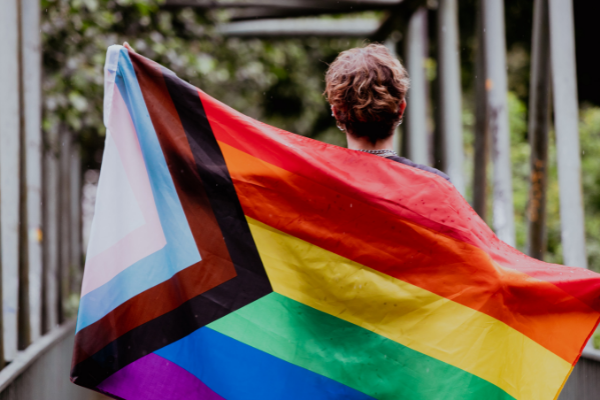
Following in the footsteps of Gilbert Baker, non-binary American artist and designer Daniel Quasar, reimagined the original rainbow flag. While Baker’s original design is widely recognized in society, members of the LGBTQIA+ community and beyond did not feel that it encompassed all groups and gender identities. As a result of the lack of proper representation, the Philadelphia Pride flag was introduced in June 2017, adding brown and black stripes to the top of the classic rainbow design. But even with the addition of multiple new stripes, some people still did not think that the flag was representative of everyone because, according to V&A, “stacking colors linked to identity on top of the original colors assigned to values confuses and lessens the community’s message.”
Hearing the feedback and concern, Daniel Quasar introduced the Progress Pride flag in 2018. Instead of following the typical stacked line design, Quasar created an arrow of colors, signifying progress:
“The arrow points to the right to show forward movement […] and illustrates that progress [towards inclusivity] still needs to be made”.
In the design, Quasar also wanted to “shift focus and emphasis to what is important in our current community climate.” The flag attempts to represent the full scope of queer lives who deserve equal representation in the community and create a color inclusive flag. Daniel Quasar has spoken publicly about how this flag is never done evolving and what is still needed for POC and trans rights; this flag is supposed to help represent that. Quasar’s design includes the original 6-color stripes, with the addition of the following in an arrow on the left side of the flag:
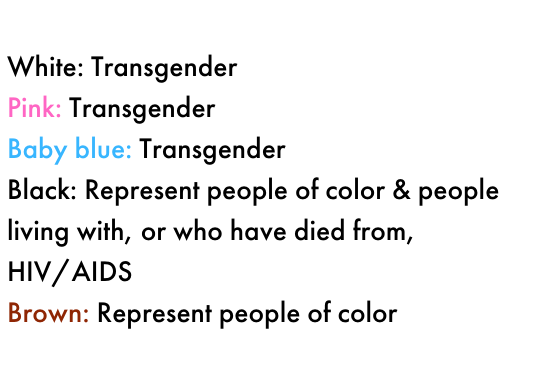
The pride flag story is ever-changing, and the list of pride flags will continue to grow, along with our rainbow pride. We anticipate that it will continue to evolve as the LGBTQIA+ community does, but regardless of what pride flag you fly, we hope you do so with gusto this month and always.
